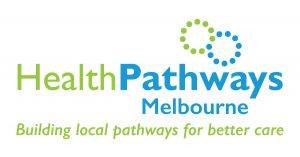
How can our PIP QI reports help manage diabetes and the HbA1c% measure in your practice?
About our PIP QI reports
North Western Melbourne Primary Health Network (NWMPHN) is continuing to provide regular, customised PIP QI data reports for any general practice in the region wanting to use data to drive improvement.
These reports are based on the 10 measures for the Practice Incentives Program Quality Improvement (PIP QI) Incentive. Remember: you can choose any area of data driven quality improvement for the PIP QI Incentive, as long as you are working in partnership with NWMPHN.
However, the 10 measures have been chosen as evidence-based measurements and are the ideal starting point for a QI activity.
In this article we are taking a closer look at PIP QI Measure 1: Proportion of patients with diabetes a current HbA1c% result (that is, recorded within the previous 12 months).
Why is this important?
The burden of diabetes remains high. In Australia diabetes was the underlying cause in 10 per cent of all deaths. This continues to rise.
People with type 1 and 2 diabetes should have their glycosylated haemoglobin (HbA1c) measured at least once every 12 months, or more frequently depending on the level of blood glucose control.
The HbA1c measure:
- provides a reliable measure of chronic hyperglycaemia
- correlates with the risk of long-term diabetes complications.
Effective management of diabetes can:
- delay the progression of the disease and its complications
- improve quality of life
- increase life expectancy
- decrease the need for high-cost interventions.
How good are we at doing this now?
In the latest data collected in the NWMPHN catchment, 63.78 per cent of patients with diabetes had an HbA1c% recorded in the previous 12 months. If the ideal rate is 100 per cent, how do you feel about this result?
Now look at your own report.
- How do you compare to the NWMPHN average?
- How do you feel about your result?
- Is it higher or lower than you expected?
- What are the factors unique to your practice that you think influences the result?
Is 100 per cent achievable? The cut-off is 12 months, so anyone having the test at 13 months won’t be counted. What is a good target to aim for? 80, 90 or 95 per cent? Think about what is achievable at your practice.
Set a goal
Plan
How you are going to improve your HBA1c% recording rates? An important step in making changes is to have an overall goal to work towards, with a definable measure.
Goal
For example: you may aim to improve the proportion of active patients with diabetes with an HbA1c% recorded in the past 12 months from 60 per cent to 70 per cent.
Measure
For example: the percentage of active patients with diabetes having an HbA1c% recorded in the previous 12 months at baseline and six months after making changes
How might you improve HBA1c% recording in your patients with diabetes?
Around the practice
- Consider a team meeting and education session. Make sure all practitioners are familiar with the importance of HBA1c% monitoring. Brainstorm ideas in your team to help improve measurement of HbA1c%. You might like to form a project team.
- Consider emailing (with permission) or posting pathology forms to patients prior to their appointment.
- Is there a nurse at your clinic who can oversee managing the diabetes register, including proactively recalling patients for their annual check-ups and arranging to send forms out prior?
Annual check-ups
- Does your clinic offer an annual check-up for people with diabetes? If you are a private billing clinic you might decide to use chronic care item numbers to make this free for patients.
- Develop an annual check-up template for your clinic.
- Set up your recall system to invite patients for an annual check-up.
Pen CAT
- Pen CAT has some data cleansing recipes for diabetes, including trying to identify those with diabetes who haven’t been coded, and those whose coding hasn’t been clearly classified. Consider running these recipes to cleanse your data.
- Pen CAT can identify patients without an HBA1c% recorded in the previous 12 months
- Install Topbar. This helps by highlighting which patients with diabetes do not have the necessary monitoring measures recorded, including HBA1c%.
Do it, study it, and act on any changes you want to make
The final step of the plan, do, study, act (PDSA) cycle is to act on what you have learned. This means testing the ideas, reflecting on what happened, and making any required changes. For example: you might find that your older patients prefer forms for blood tests be posted rather than emailed, so you could change your process to be more patient-centred.
How can our quality improvement toolkits help?
NWMPHN has developed toolkits which can assist you in tackling improvement in this measure.
- The Quality Improvement Guide and Tools shows you how to complete quality improvement (QI) activities using a whole of practice approach and includes tool, templates and examples.
- Download the PIP QI Ten Measures workbook and use it for self-guided quality improvement.
- Our diabetes quality improvement toolkit is coming soon.
More information
More information on our quality improvement program and toolkits is available on our our website. Details on how to use the PIP QI reports is available on the Pen CS website.
If you have any questions about quality improvement, please contact us on (03) 9347 1188 or email primarycare@nwmphn.org.au
HealthPathways Melbourne 
Visit the Glycaemic Control for Type 2 Diabetes on Health Pathways Melbourne for advice on how to manage diabetes at your practice. Several of the Diabetes Pathways have been reviewed and updated recently.
Are you a GP or health professional in our region who doesn’t have access to HealthPathways Melbourne? Request access online or contact info@healthpathwaysmelbourne.org.au




